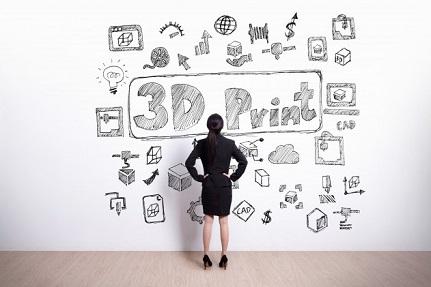Assistant Professor
- FMA
- The Fabricator
- FABTECH
- Canadian Metalworking
Our Publications
Categories
- Additive Manufacturing
- Aluminum Welding
- Arc Welding
- Assembly and Joining
- Automation and Robotics
- Bending and Forming
- Consumables
- Cutting and Weld Prep
- Electric Vehicles
- En Español
- Finishing
- Hydroforming
- Laser Cutting
- Laser Welding
- Machining
- Manufacturing Software
- Materials Handling
- Metals/Materials
- Oxyfuel Cutting
- Plasma Cutting
- Power Tools
- Punching and Other Holemaking
- Roll Forming
- Safety
- Sawing
- Shearing
- Shop Management
- Testing and Measuring
- Tube and Pipe Fabrication
- Tube and Pipe Production
- Waterjet Cutting
Industry Directory
Webcasts
Podcasts
FAB 40
Advertise
Subscribe
Account Login
Search
Things to consider before jumping into additive manufacturing
Adopting AM will require you to commit to using it long enough to accurately assess it—and maybe operate in your manufacturing ‘discomfort’ zone
- By Federico Sciammerella
- March 6, 2019
I’ve advised dozens of manufacturers contemplating the adoption of 3D printing. If you’re thinking about bringing AM in-house, you must thoroughly know your application and have a plan for designing and 3D-printing the part.
It’s also critical to develop a streamlined, closed-loop communication channel that extends from management through every level of your operation and back to management. Additionally, AM will require you and your team to commit to using it long enough to accurately assess it. This could necessitate operating outside of your manufacturing comfort zone.
Not everyone is willing to do this or devote the time necessary to optimize an AM process. That was the case with a client of mine that supplied products to the automotive industry. The client wanted to 3D-print some fixtures for mounting parts during assembly. I indicated it would be me and my team’s first time printing such a fixture and extra development time would be needed. We would be depositing a lot of metal and had to find a way to control thermal distortion. That took longer than we hoped, and, in fairness, our solution wasn’t perfect.
The fixture’s heaviness was the client’s main concern, and the company decided to pull the plug on the project before we could demonstrate ways to reduce the weight. I do not think the project was a failure, and our team learned a lot. But it was clear the client wanted quick answers and was unwilling to go the distance with us to find them.
Manufacturing processes—especially those involving new technologies like 3D printing—can’t be implemented as quickly as everyone would like. It is important to always communicate that upfront and ensure that all team members and partners understand it.
About the Author
Federico Sciammerella
About the Publication
- Podcasting
- Podcast:
- The Fabricator Podcast
- Published:
- 04/16/2024
- Running Time:
- 63:29
In this episode of The Fabricator Podcast, Caleb Chamberlain, co-founder and CEO of OSH Cut, discusses his company’s...
- Trending Articles
- Industry Events
16th Annual Safety Conference
- April 30 - May 1, 2024
- Elgin,
Pipe and Tube Conference
- May 21 - 22, 2024
- Omaha, NE
World-Class Roll Forming Workshop
- June 5 - 6, 2024
- Louisville, KY
Advanced Laser Application Workshop
- June 25 - 27, 2024
- Novi, MI



























